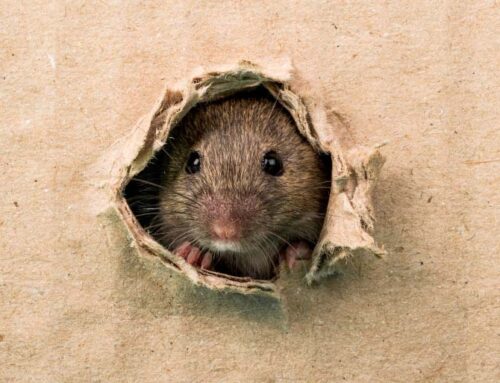As the chill of winter settles in, our cozy homes become a haven not just for us, but for some uninvited guests – ladybugs and stink bugs. Before you consider squashing that stink bug wandering on your wall, remember, their name holds a clue to the pungent defense they release.
And those charming ladybugs, with their vibrant hues, aren’t just a pretty sight; they can be quite the little biters.
These insects, often nestled within our walls during the colder months, may venture into our living spaces, turning from natural wonders to pesky invaders. While they’re a common sight in many households, one wonders: are these bugs mere nuisances or do they pose a greater problem? And how can we effectively manage their unseasonal home invasion?
Understanding Stink Bugs and Ladybugs
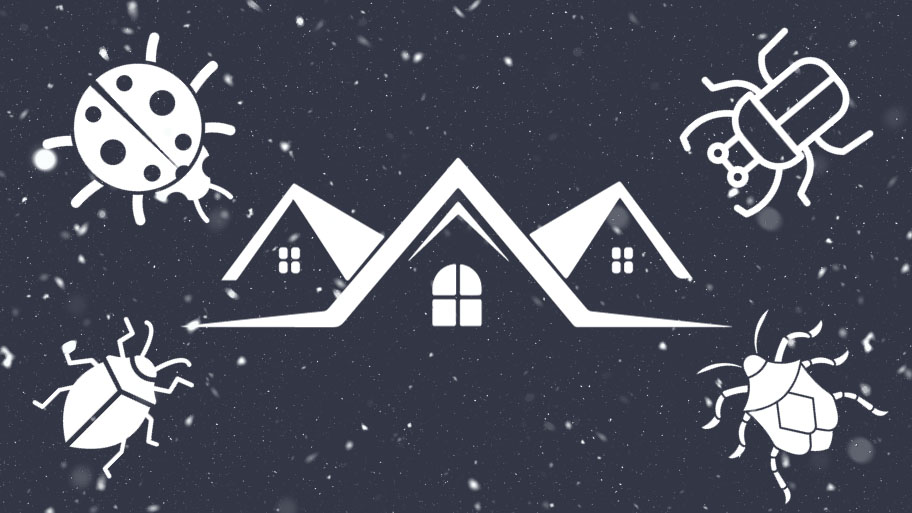
The Nature of Stink Bugs
Stink bugs, known scientifically as Halyomorpha halys, are notorious for their defensive odor. These shield-shaped insects, typically brown or gray, are about half an inch long.
They are not native to many regions but have become common household pests. Stink bugs are primarily outdoor insects, feeding on fruits and crops, but as the weather cools, they seek shelter indoors. Their presence in homes is more about survival than causing harm.
They don’t bite or carry diseases, but their tendency to invade in large numbers can be a nuisance. Their infamous odor, a defense mechanism when threatened or crushed, is their most distinguishing and unwelcome feature in human habitats.
Brown Marmorated Stink Bug
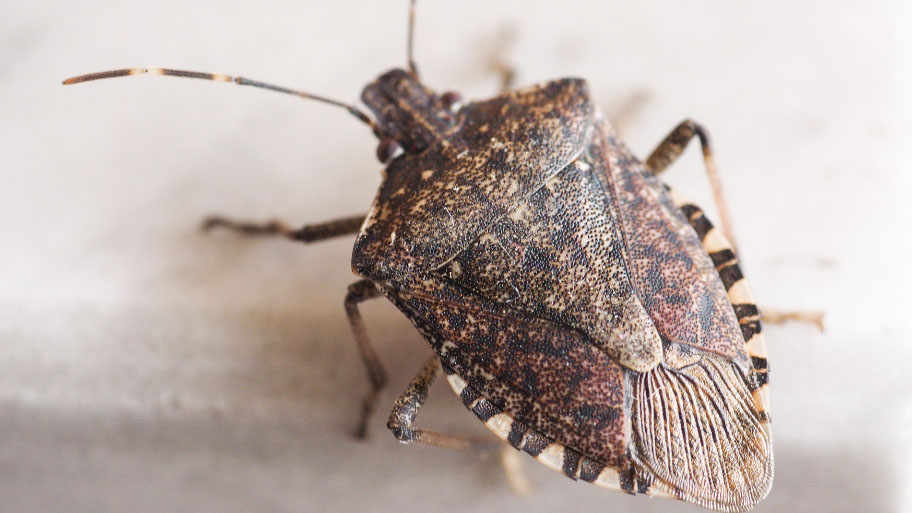
The Brown Marmorated Stink Bug, a specific species within the stink bug family, has garnered attention due to its impact on homes and agriculture.
Originating from Asia, it has spread widely, particularly in temperate regions. These bugs are distinguished by their mottled brown color and the distinct white bands on their antennae and legs. In homes, they are often found in attics, walls, and crawl spaces, seeking warmth during colder months.
While they pose no structural danger to buildings, their large numbers can be overwhelming. Additionally, their presence can be problematic for homeowners due to the unpleasant odor they release when disturbed or crushed, making them a particularly bothersome pest during their seasonal invasions.
The Multicolored Asian Lady Beetle
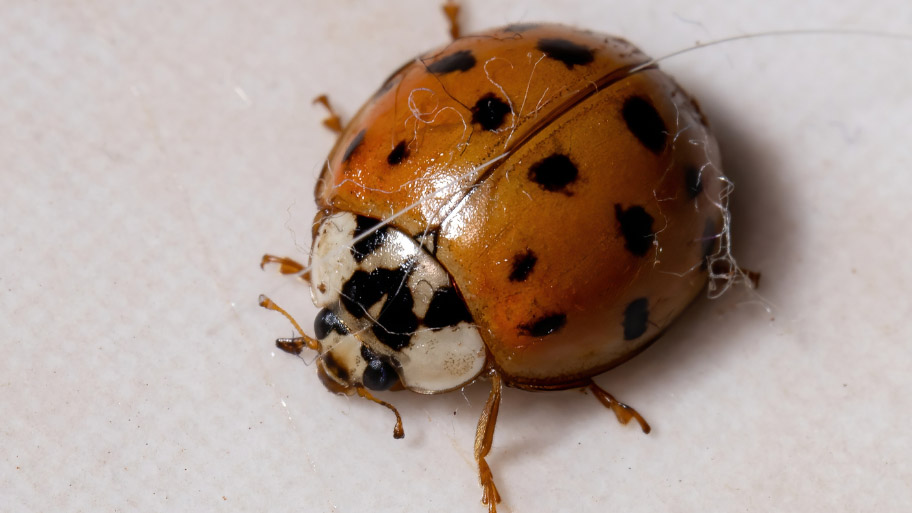
The Multicolored Asian Lady Beetle, often mistaken for the common ladybug, is another seasonal invader of homes. These beetles can vary in color from yellow to red, with a varying number of spots.
Unlike their harmless lookalike, the Asian Lady Beetle can bite, causing slight discomfort. They are beneficial in gardens, as they feed on aphids and other plant pests, but become a concern when they overwinter in large numbers in homes.
They are attracted to light-colored buildings and sunny, warm windows. While they don’t cause structural damage, their tendency to swarm and leave behind a yellow, foul-smelling fluid can be distressing for homeowners.
Preventive Measures: Keeping Pests at Bay
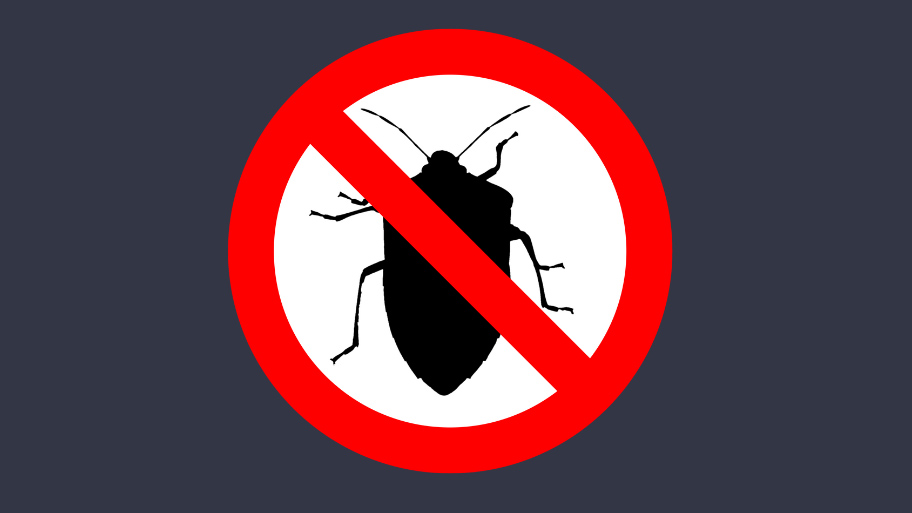
1. Sealing Entry Points
The first line of defense against stink bugs and ladybugs is to seal their entry points. These insects can sneak in through tiny cracks and gaps around windows, doors, and foundations.
Inspecting your home and sealing these openings with caulk or weather stripping can significantly reduce the likelihood of these pests finding their way into your living spaces, ensuring a more pest-free environment.
2. Repairing Holes in Screens
Another effective preventive measure is repairing any holes in window and door screens. Over time, screens can develop tears or gaps that are perfect entryways for these tiny invaders.
Regularly checking and repairing these screens not only improves ventilation but also acts as a barrier, preventing stink bugs and ladybugs from entering your home while allowing fresh air to circulate.
3. Natural Repellents
Embrace the power of nature with eco-friendly repellents to keep stink bugs and ladybugs at bay. The refreshing scent of wintergreen oil acts as a natural deterrent, creating an unwelcoming environment for these critters.
Alternatively, a homemade garlic concoction, steeped in water, offers a pungent barrier. Neem oil, with its distinctive aroma, also serves as an effective repellent, discouraging these insects from making your home theirs.
4. Physical Barriers
Innovative physical barriers offer a simple yet effective solution against pest entry. Strategically placing dryer sheets around potential entry points can ward off these insects, thanks to the repelling properties of certain compounds in the sheets.
Additionally, employing sticky solutions like fly tape or duct tape can create a barrier that traps these pests, preventing them from venturing deeper into your home.
Effective Home Remedies for Pest Control
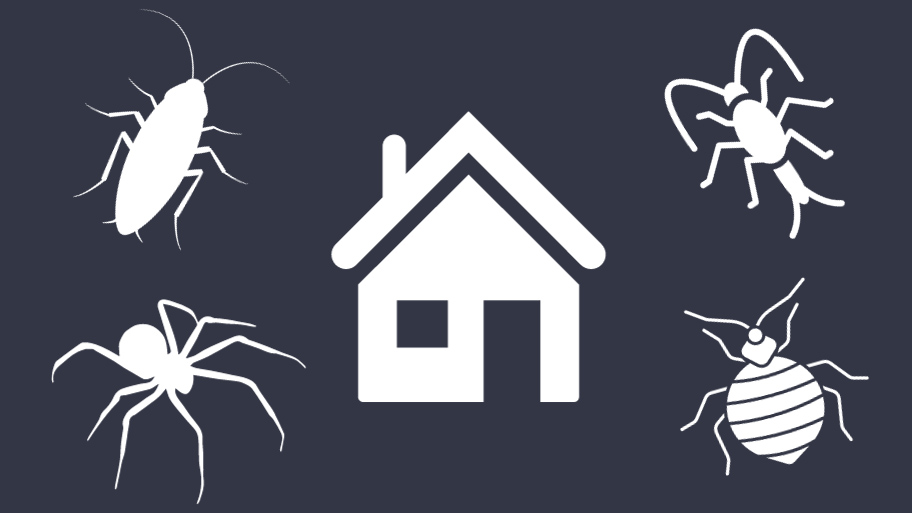
1. Utilizing Diatomaceous Earth
Diatomaceous Earth stands out as a natural, effective combatant in the fight against stink bugs and ladybugs. This fine, siliceous powder, originating from ancient diatoms, is a safe option for humans and pets but fatal for small insects.
Its mechanism is simple yet effective: it compromises the insects’ exoskeleton, leading to dehydration.
Sprinkling Diatomaceous Earth around common entry points like windows and doors forms a discreet yet potent barrier. This method is particularly appealing for those seeking a natural, non-toxic approach to pest control, providing peace of mind while keeping pests at bay.
2. The Role of Light in Attracting Pests
Understanding the attraction of stink bugs and ladybugs to light can be pivotal in pest control. These insects are naturally drawn to illumination, particularly in the evenings.
To turn this to your advantage, consider dimming external lights and drawing curtains at dusk.
This simple action can make your home less inviting to these pests, reducing their incursions. It’s a tactic that aligns with their instinctual behaviors, offering a subtle yet effective approach to managing their presence in and around your home.
3. Light traps and their effectiveness
Light traps are an ingenious way to exploit the light-seeking behavior of these pests. These devices lure insects with a light source and then trap them securely.
Positioning these traps in areas prone to pest activity, such as basements, garages, or attics, can markedly cut down their numbers.
Most active after dark, these pests are easily attracted to the traps, making them an efficient and environmentally friendly option for pest control. Light traps are a smart choice for those seeking a humane and sustainable approach to managing home infestations.
4. Vacuuming as a Removal Method
Vacuuming emerges as a practical and immediate solution for removing stink bugs and ladybugs from your home. It’s particularly effective for quickly clearing large numbers of these pests or reaching those in difficult spots.
Crucial to this method is the immediate disposal of the vacuum contents, preferably outside, to prevent re-entry of the pests. This approach is swift, efficient, and chemical-free, making it ideal for households, especially those with children and pets.
Regular vacuuming not only removes pests but also helps maintain cleanliness, further deterring future invasions by these unwelcome guests.
Professional Solutions, When to Seek Them
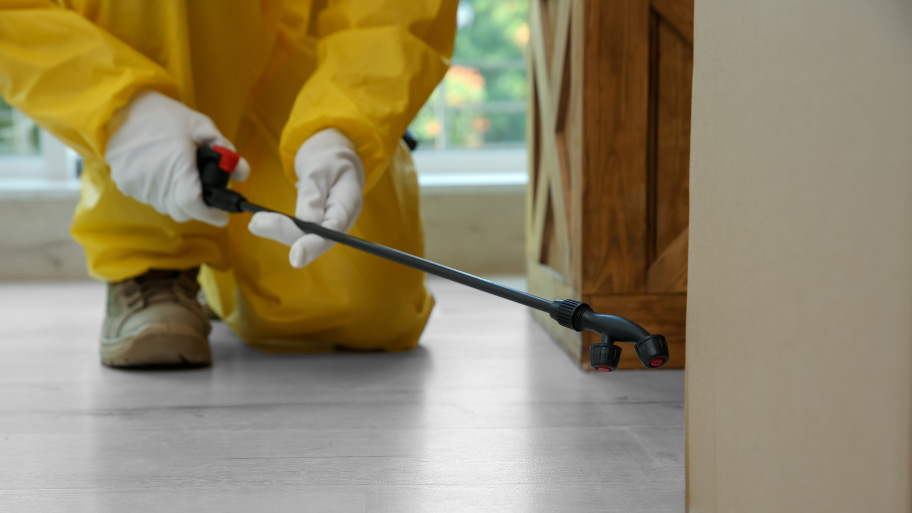
When Home Remedies Aren’t Enough
There are instances when home remedies might fall short in the battle against stink bugs and ladybugs. Recognizing these situations is key to maintaining a pest-free home. Consider seeking professional help when:
In these scenarios, it’s prudent to turn to experts who can provide more robust and long-lasting solutions. Professional pest control services offer targeted treatments that are often more effective and sustainable than home remedies, especially in severe cases.
The Role of Professional Pest Control Services
When home strategies fall short, the expertise of a professional pest control service like Bobcat Pest Management becomes invaluable. Their seasoned team brings a wealth of experience in handling stink bugs and ladybugs, employing methods that are both environmentally conscious and effective. The services they provide include:
Choosing Bobcat Pest Management for persistent or recurring pest dilemmas is a strategic move towards reclaiming your home’s comfort and safety. Their proficiency in managing these specific pests ensures a serene and secure home environment, free from unwelcome intruders.
Final Thoughts: Ensuring a Pest-Free Environment

In wrapping up, let’s revisit the essential tactics for a pest-free home, focusing on stink bugs and ladybugs. These pointers are crucial for maintaining a tranquil living space:
Embracing these strategies will aid in effectively managing and preventing stink bug and ladybug infestations. Consistent application and timely measures are key to keeping your home both welcoming and pest-free.

